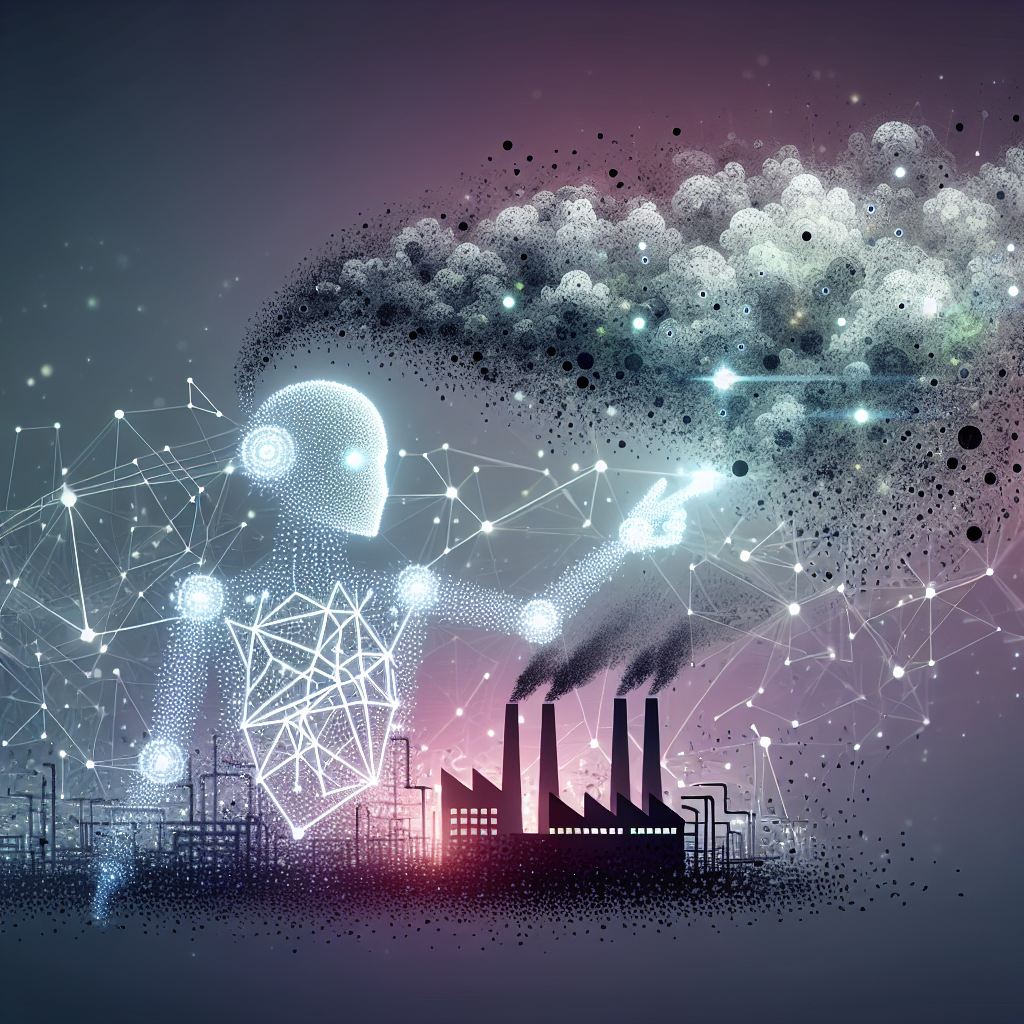Air pollution is a pressing issue that affects millions of people around the world. It is caused by a variety of sources, including emissions from vehicles, industrial activities, and natural sources such as wildfires. Poor air quality can have serious health consequences, including respiratory problems, heart disease, and even premature death.
In recent years, there has been a growing interest in using artificial intelligence (AI) to monitor air quality and control pollution. AI-powered solutions offer a number of advantages over traditional monitoring methods, including the ability to collect and analyze large amounts of data in real time, identify patterns and trends, and make predictions about future air quality conditions.
One of the key benefits of AI-powered air quality monitoring systems is their ability to provide more accurate and timely information than traditional monitoring methods. By using sensors and other data collection devices, these systems can collect data on a wide range of pollutants, including particulate matter, nitrogen dioxide, ozone, and carbon monoxide. This data can then be analyzed using machine learning algorithms to identify sources of pollution, predict future air quality conditions, and provide recommendations for reducing pollution levels.
AI-powered air quality monitoring systems can also help to improve the efficiency of pollution control measures. By analyzing data on pollution levels and sources, these systems can help regulators and policymakers to identify areas where pollution levels are particularly high, prioritize resources for pollution control measures, and evaluate the effectiveness of those measures over time.
In addition to monitoring air quality, AI-powered solutions can also be used to control pollution in real time. For example, some systems use AI algorithms to control the operation of pollution control devices, such as scrubbers and filters, in order to optimize their performance and reduce emissions. These systems can also be used to monitor and control traffic flow in urban areas, in order to reduce vehicle emissions and improve air quality.
Overall, AI-powered solutions have the potential to revolutionize the way we monitor and control air quality and pollution. By harnessing the power of machine learning and data analytics, these systems can provide more accurate and timely information, improve the efficiency of pollution control measures, and help to protect public health and the environment.
FAQs:
Q: How do AI-powered air quality monitoring systems work?
A: AI-powered air quality monitoring systems use sensors and other data collection devices to collect data on pollutants in the air. This data is then analyzed using machine learning algorithms to identify sources of pollution, predict future air quality conditions, and provide recommendations for reducing pollution levels.
Q: What are the benefits of using AI for air quality monitoring?
A: AI-powered air quality monitoring systems offer a number of advantages over traditional monitoring methods, including more accurate and timely information, the ability to analyze large amounts of data in real time, and the ability to make predictions about future air quality conditions.
Q: How can AI help to control pollution?
A: AI-powered solutions can help to control pollution by analyzing data on pollution levels and sources, identifying areas where pollution levels are high, prioritizing resources for pollution control measures, and evaluating the effectiveness of those measures over time. AI algorithms can also be used to control the operation of pollution control devices in order to optimize their performance and reduce emissions.
Q: Are AI-powered air quality monitoring systems expensive?
A: The cost of AI-powered air quality monitoring systems can vary depending on the size and complexity of the system. However, the long-term benefits of using these systems, including improved public health and environmental protection, often outweigh the initial costs.
Q: Are AI-powered solutions for air quality monitoring and pollution control widely used?
A: AI-powered solutions for air quality monitoring and pollution control are still relatively new, but they are gaining traction in a number of industries and sectors. As the technology continues to mature and become more affordable, we can expect to see these solutions being adopted more widely in the coming years.

